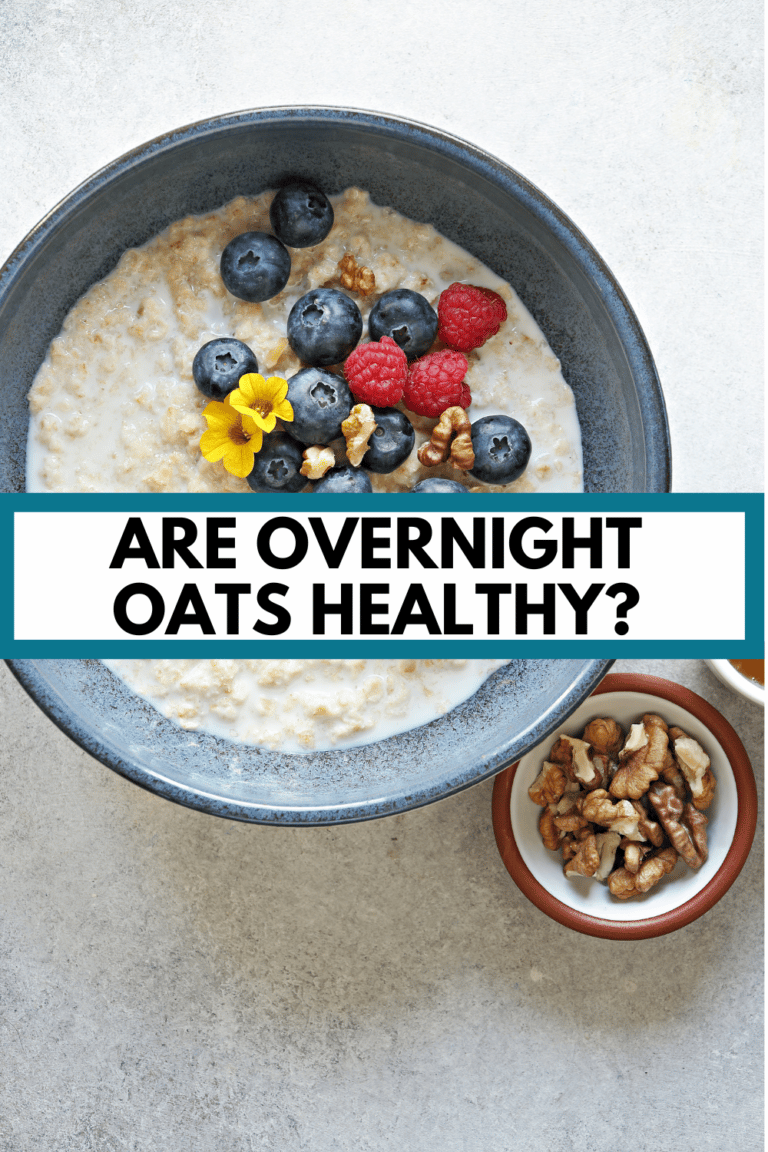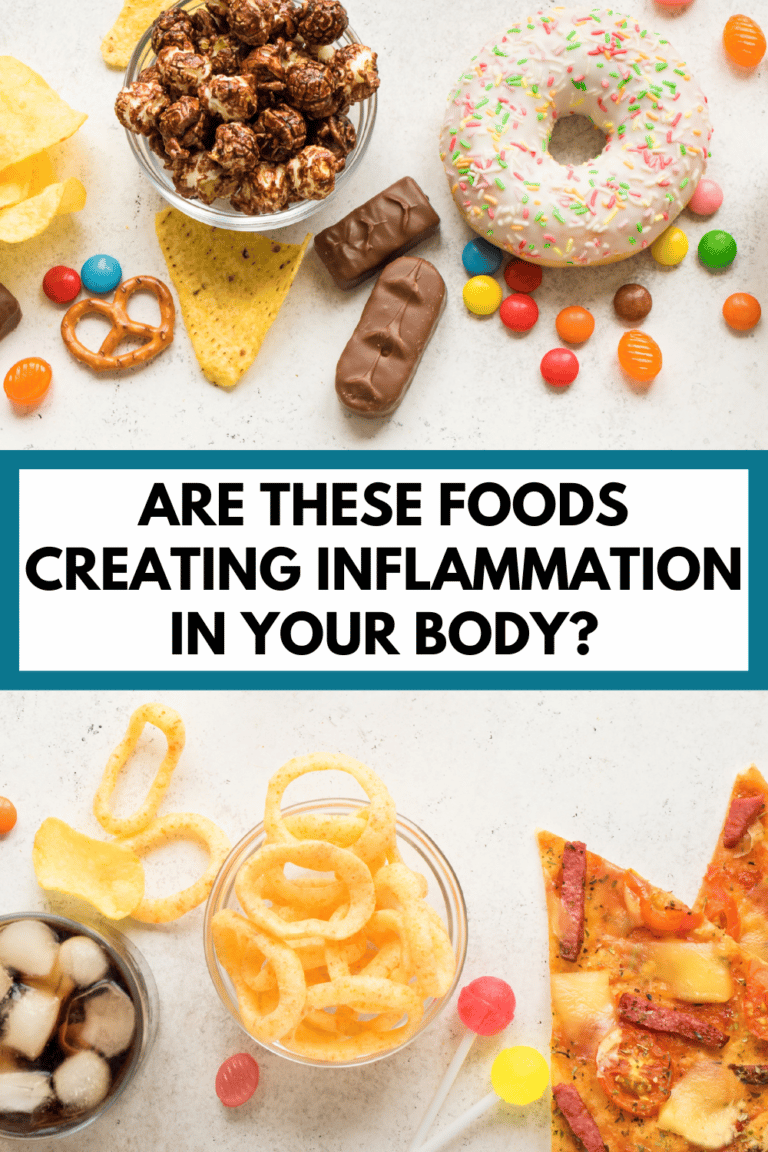What are Carbohydrates and What do They Do?
Let’s talk carbs! Carbohydrates tend to be the center of extremes in the health and wellness industry. Some advocate for high carbohydrate diets and other vehemently stand for low carbohydrate diets. So which is better? Personally and professionally, I tend to sit in the grey, preferring to focus on facts, evidence, and the experiences of each individual. This post is going to explore what carbohydrates are, the types of carbohydrates, the function of carbohydrates in our bodies, food sources, and how many carbohydrates the human body needs.
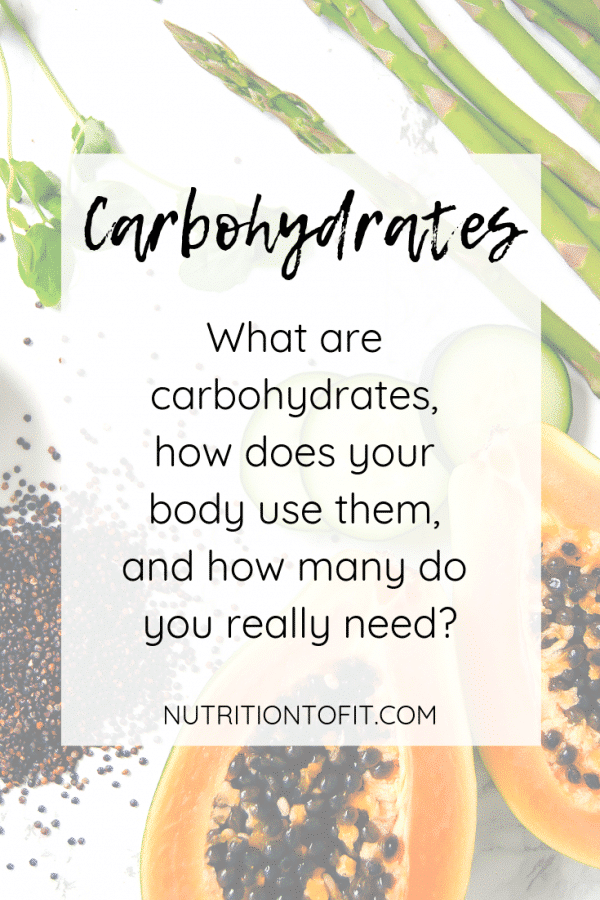
What are Carbohydrates?
Carbohydrates are large molecules consisting of carbon (C), hydrogen (H), and oxygen (O) atoms. Carbohydrates can sometimes be referred to as “CHO”, based on this abbreviation of their most basic molecular structure.
Carbohydrates, along with protein and fat, are one of the energy-giving macronutrients. They provide 4 calories per gram of carbohydrate.
Types of Carbohydrates
What are Saccharides?
“Saccharides” are the sugar unit structure of carbohydrates and the name comes from the Greek word for sugar. There are four types of saccharides that represent how many sugar units each saccharide has.
- Monosaccharide: 1 sugar unit
- Monosaccharide examples include: glucose, fructose, galactose, and ribose
- Disaccharide: 2 sugar units (2 monosaccharides)
- Disaccharide examples include: lactose (glucose + galactose; aka milk sugar), sucrose (glucose + fructose; aka table sugar), and maltose (glucose + glucose; aka product of starch digestion and processing)
- Oligosaccharide: 3-9 sugar units (3-9 monosaccharides)
- Oligosaccharide examples include: fructo-oligosaccharides (Jerusalem artichokes, onions), maltotriose (produced from starch during digestion, found in liquid glucose, brown rice syrup), human milk oligosaccharides (human breast milk), among others.
- Polysaccharide: 10 or more sugar units (10 or more monosaccharides)
- Polysaccharide examples include: starch (energy obtained from plants), glycogen (storage form of glucose in human muscles and liver), and cellulose (structural in plants; provides fiber in human nutrition).
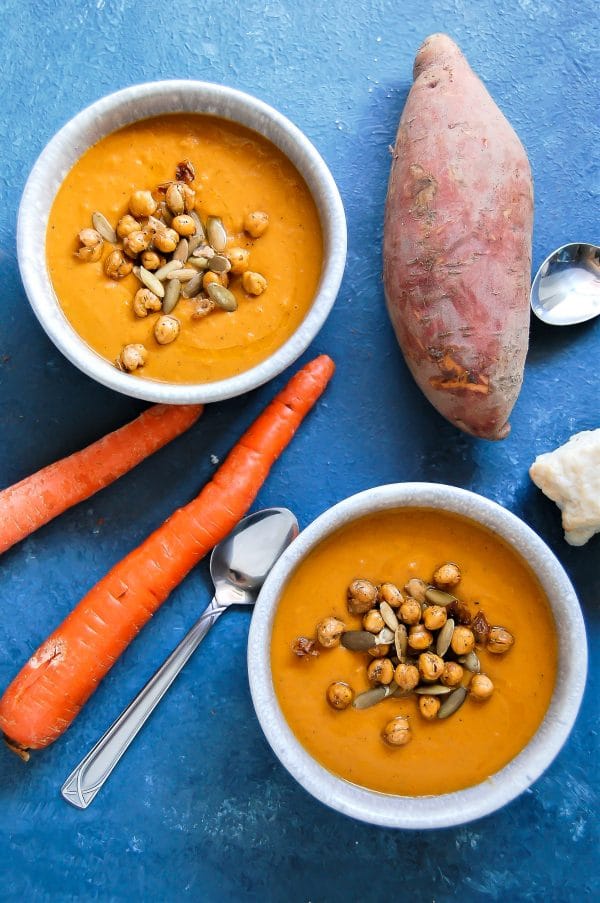
What are Refined, Simple, and Complex Carbohydrates?
Refined and simple carbohydrates are terms sometimes used interchangeably, but there is a difference.
Refined carbohydrates are sugars and grains that have been processed and stripped of all bran, fiber, and nutrients. Examples of refined carbs include things like white flour and white rice.
Simple carbohydrates are carbohydrates that are easily broken down for fuel by the body. Examples of simple carbs include those found naturally in foods like fruits, milk, and dairy products. Simple carbs are also found in more processed examples, including candy, table sugar, and soft drinks.
Complex carbohydrates are longer chains of sugar molecules strung together. They’re typically found in more fiber-rich and “whole” sources of carbohydrates, like peas, beans, whole grains, and vegetables.
How are Carbohydrates Digested?
Carbohydrate digestion begins in the mouth with digestive enzymes in our saliva that begin to breakdown digestible carbohydrates (sugar and starch). As the carbohydrates pass into our stomach they combine with stomach acids to break down further before entering the small intestine. In the small intestine, more digestive enzymes are released which further break down carbohydrates into monosaccharides to then be absorbed in the small intestine.
All other carbohydrates that aren’t absorbed by the small intestine are fibrous carbohydrates . These get partially digested by bacteria, especially as they move through the large intestine and colon. Fiber cannot be fully digested and absorbed like other carbohydrates, so they end up contributing “bulk” to our stools, which plays a huge role in our digestive health.
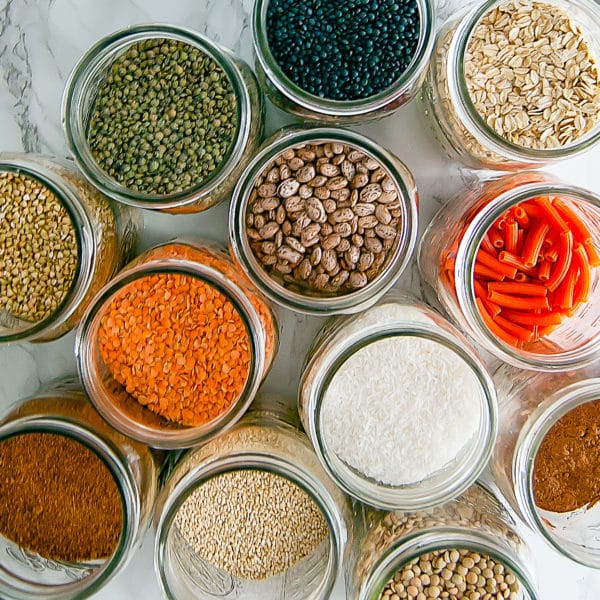
Functions of Carbohydrates in the Body
Carbohydrates Provide Immediate Energy
When carbohydrates are absorbed as monosaccharides (glucose), this glucose is taken into your cells and produces a fuel molecule called adenosine triphosphate (ATP). Your cells can then use ATP to fuel a myriad of metabolic tasks.
ATP can typically be produced from both dietary carbohydrates and fats, but if you are consuming carbohydrates, your cells prefer to use carbohydrates as the main source (1).
Carbohydrates Provide Energy Storage
If the amount of carbohydrates you’re consuming exceeds your body’s current immediate energy needs, the excess can be stored for later.
The storage form of glucose is called glycogen. Glycogen is found in your muscles and liver.
The glycogen in your liver can help maintain normal blood sugar levels between meals, as it can be released into the blood and can be used as energy throughout your body.
On the other hand, the glycogen in your muscles can only be used by your muscle cells. This glycogen is essential during activities like long periods of intense exercise. The actual glycogen amount stored in your muscles varies person to person, but studies show it’s as much as 500 grams (2).
If your body has all the glucose it needs and your glycogen stores are full, your body then converts excess carbohydrates into triglycerides which are stored as fat.
Carbohydrates Protect Muscles
When glucose from carbohydrates is lacking, your muscles can break down into amino acids to be converted into glucose and other energy-generating compounds. Your body views this as a way of continuing to provide glucose, a preferred energy source, to your brain during times of perceived starvation.
Ketones (energy units derived from fat when there isn’t enough glucose or glycogen for energy) can provide some energy to your brain. However, ketones can only provide a max of 70% energy for the brain (3). Having at least some carbohydrate intake in your diet can help prevent muscle breakdown for the glucose your brain needs and can better protect and maintain your muscles.
Carbohydrates Improve Digestive Health
While our bodies are resourceful and can source alternative energy sources from things other than glucose or glycogen stores, the fiber found in carbohydrates is pretty hard to replace.
Dietary fiber does not get broken down into glucose (unlike sugar or starch). No matter whether it’s soluble or insoluble fiber, dietary fiber is not digestible. Fiber offers health benefits like increased stool regularity, protection against different gastrointestinal diseases, and provides greater satiety and fullness, which can help with weight management.
Carbohydrates Can Improve Cardiovascular Health
Fiber-containing carbohydrates can improve cardiovascular health. Fiber can help lower LDL (the “bad”) cholesterol. Additionally, as fiber moves through your gastrointestinal tract, it binds to bile acids, preventing them from being reabsorbed. Your body then has to use cholesterol to produce more bile acids in the liver, which prevents this cholesterol from circulating in your blood.
It’s important to note that it’s the fiber in carbohydrates that is beneficial to cardiovascular health. Refined carbohydrates, particularly when consumed in excess, do not aid cardiovascular health.

Carbohydrates Can Impact Diabetes Management and Prevention
Similar as with cardiovascular disease, excess refined carbohydrates may increase the risk of diabetes.
However, fiber does not impact your blood sugar like refined carbohydrates. Soluble fiber has many beneficial effects, like:
- delayed carbohydrate absorption in your digestive tract
- the above may lead to lower blood sugar levels after meals
- soluble fiber can even lower Hgb A1c levels (A1c is a molecule that representing average blood sugar levels over the past three months) (4, 5)
Food Sources of Carbohydrates
There are a wide variety of sources of carbohydrates, including refined, simple, and complex carbohydrates. The carbohydrate sources I recommend most include the following:
- Non-starchy Vegetables
- Starchy Vegetables
- sweet potatoes, potatoes, corn, peas
- Try it: Greek Yogurt Mashed Potatoes, 5-Minute Breakfast Stuffed Sweet Potato, Sweet and Savory Sweet Potato Bowls, Easy Vegan Creamed Corn, Butternut Sage Carbonara, Greek-Inspired Lemon Skillet Potatoes
- Fruits
- Whole Grains
- quinoa, oats, buckwheat, brown rice, etc.
- Try it: Broccoli Kale Quinoa Salad, Banana Buckwheat Pancakes, Oatmeal Banana Muffins, Pumpkin Spice Buckwheat Granola, Baked Vanilla Oatmeal Custard, Blueberry French Toast, Chicken Philly Quinoa Bowl
- Dairy
- milk, yogurt, cheese, kefir
- Try it: Chocolate Banana Kefir Chia Pudding, Rainbow Frozen Yogurt Bark, Yogurt Whipped Polenta Bowls, Whipped Ricotta Fruit Pizza
- Beans, Pulses, Legumes
- lentils, black beans, chickpeas, soy beans, etc.
- Try it: Healthy Buckeyes, Pizza Dip, Lemon Ginger Hummus, Hearty Vegetable Chili, 3-Ingredient Spinach Artichoke Dip, Roasted Radish Hummus, 3-Ingredient Black Bean Soup
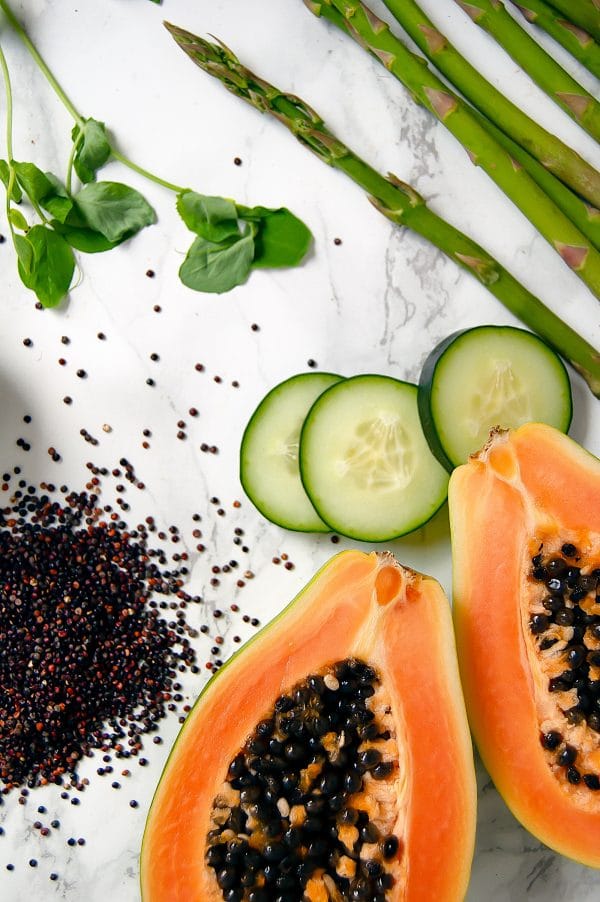
How Many Carbohydrates Do You Need a Day?
The million dollar question, right? So, truth be told, there is no single right answer. You can see above that carbohydrates aid with many functions in our bodies. However, our bodies are resourceful and even many functions that prefer to use carbohydrates as their primary fuel source can often use other sources, like fat.
Should You Eat a Low Carb Diet?
Different amounts of carbohydrates work and are sustainable for different people. Some people find extremely limited carbohydrate diets, like a true medical ketogenic diet, to be what best sustains them (i.e. pediatric epilepsy patients prescribed a therapeutic, medical ketogenic diet in a supervised, clinical setting). Many people find a lower carbohydrate intake (25-60 grams per day) best helps them feel most energized and manages their health conditions. Many other people find adhering to the Dietary Guidelines for Americans recommendation of 45-65% of your total daily calorie intake coming from carbohydrates to feel what’s best for them. Then of course there are healthy individuals at any and every point in between, and even beyond these carb levels.
In general, if you’re considering altering your current carbohydrate intake for either medical or weight purposes, I would look and see how sustainable are the changes you’re considering. Will this be a lifestyle you can still stick with even on your worst days? Five years from now? If the answer is no, or if you’re feeling added mental or physical stress from these changes, that’s a red flag that your potential changes may not really be a good fit. I strongly recommend working with a dietitian to assess your current intake, goals, and what/ if any changes you can implement to better work with your lifestyle.
It’s also important to remember that carbohydrates provide more for our bodies beyond just energy. Many carbohydrate forms, like vegetables, fruits, dairy, and grains, provide innumerable additional health benefits associated with an increase of fiber, vitamins, minerals, hydration, and antioxidants.
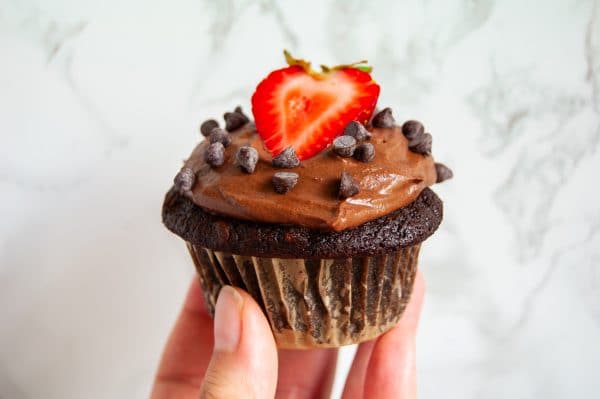
Bottom Line on Carbohydrates
For the vast majority of people, a long-term, sustainable healthy lifestyle includes carbohydrates in a variety of forms. While all forms (yes, even refined) can typically be enjoyed in moderation (barring allergies/ sensitivities!), I recommend focusing on carbohydrate sources like non-starchy vegetables, fruits, beans, legumes, dairy, and whole grains.
Again – if you’re considering embarking on a diet or lifestyle with drastic changes to your carbohydrate intake in either extreme, I highly recommend honestly evaluating how sustainable those changes will be. Any changes you see from dramatically changing your diet are going to begin to reverse the second you reverse your eating habits.
Carbohydrates don’t need to be feared and can absolutely be included in many healthy lifestyles. Carbs can be enjoyed and used strategically, no matter your goals. A variety can, and often should, be consumed daily.
References:
- Elia M, et al. (1988, June.) Carbohydrate, fat, and protein metabolism in muscle and in the whole body after mixed meal digestion.
- Jorgen J, et al. (2011, December 30.) The role of skeletal muscle glycogen breakdown for regulation of insulin sensitivity by exercise.
- White H, et al. (2011, April 6.) Clinical review: ketones and brain injury.
- Tosh SM. (2013, April.) Review of human studies investigating the post-prandial blood-glucose lowering ability of oat and barley food products.
- Gibb RD, et al. (2015, December.) Psyllium fiber improves glycemic control proportional to loss of glycemic control: a meta-analysis of data in euglycemic subjects, patients at risk of type 2 diabetes mellitus, and patients being treated for type 2 diabetes mellitus.




